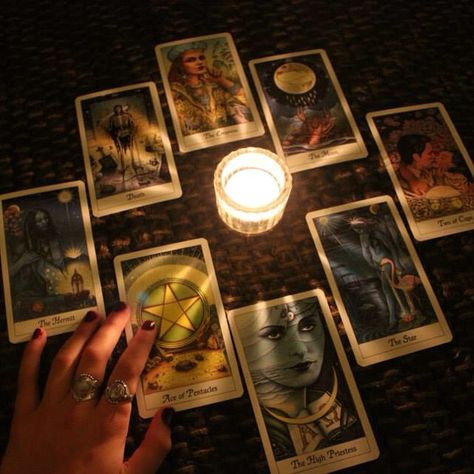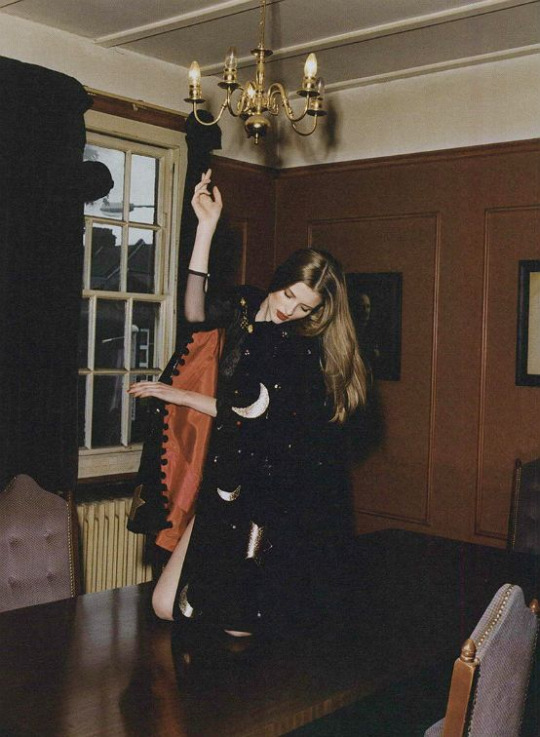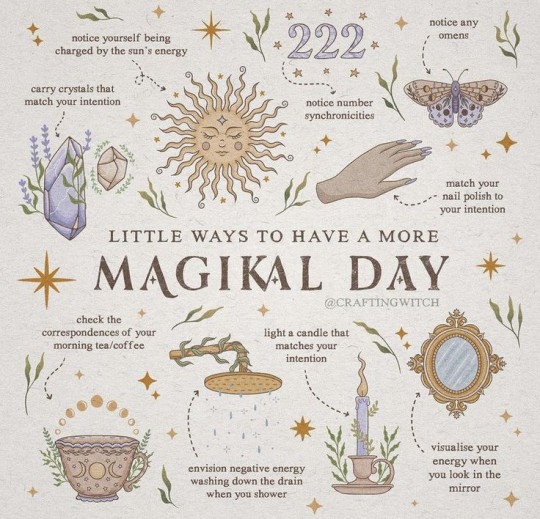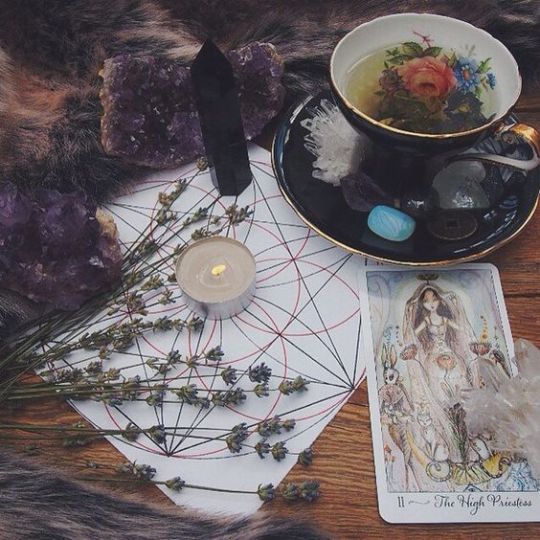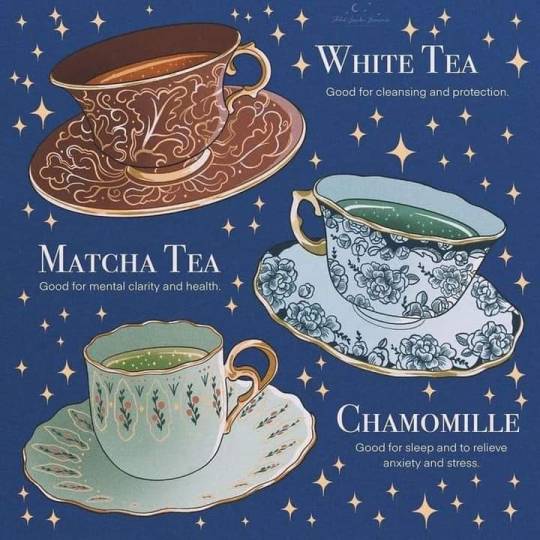Text
Houseplant Correspondences & Meanings
I've developed these correspondences as part of an oracle deck that I had planned to create but I need to actually draw them.
ANYWAYS here are some houseplants and their witchy correspondences!

If you know me personally or have been following me for a while, you'll know that I'm obsessed with houseplants. So of course, being me, I've been trying to incorporate them into my practice.
Snake Plant (Dracaena trifasciata)
-Inner Strength, Positivity
Snake Plants can live and thrive even in difficult environments. This plant reminds you of your inner strength and of the positivity around you. You are capable of adapting to your situation. Be confident in yourself and your decisions, even if those decisions are hard to make.
These plants are also believed to have the ability to absorb negativity and release positivity, as a person this is someone who always shows you the bright side.
Rubber tree (Ficus elastica)
-Flexible, Lenient, Support
Rubber trees are diligent and flexible. The aerial roots of the rubber tree are used to build bridges in some places! These plants are able to be trained as they grow so that the tree is never harmed.
Things are changing and you seem to be handling it well, allowing yourself to go with the flow is the right choice. You may be the support for someone else going through a change right now, allowing them to lean on you and reflect on your love and kindness.
Ficus Elastica reminds you of your resilience, your ability to bend without breaking. You know that as time passes and things change you will only get stronger.
Pothos (Epipremnum aureum)
-Easy going, Care-free, Quick to recover
Perhaps it’s time that you allow yourself some freedom. This card urges you to practice some self-care–and that doesn’t just mean drinking a gallon of water and smearing on a mud mask–let yourself relax and have some fun. Hang out, like the vines of your friendly pothos.
This plant can also represent someone who is outgoing, carefree, and a true extrovert. Seek them out for support, they are a good companion to have.
Spider plant (Chlorophytum)
-Friendship, Community, Kinship
The spider plant is one of the easiest plants to propagate, making it an easy gift for those around you! This plant signifies a strong community and friendships. Take stock of the friends you have and let them know how grateful you are!
You can look toward and lean on your friends and your community, either for guidance or for a listening ear. Let yourself be a part of this community and know that it doesn’t make you any less of an individual to be part of something bigger than yourself.
Maidenhair Fern (Adiantum)
-Gentle, Careful
Maidenhair fern is soft to the touch, encouraging you to be gentle with yourself and those around you. Let yourself be taken care of and allow others to shower you in love and praise, you deserve it. You are being careful, and there is no shame in that, but without any trust in yourself or those around you, you may end up worse off. Let your hair down and have some fun.
ZZ Plant
-Resillient, Independent
The ZZ plant is known for thriving even with little outside help, it’s time to be like ZZ and be independent. You have the resilience and strength necessary to make it on your own. This doesn’t mean that you need to be alone, just that it’s time to stand with your own two feet.
This plant also reminds you that while being independent is certainly something to be proud of, it’s okay to reach out for help when you need it. Even the ZZ plant needs to be watered and given a little sunshine!
These correspondences are based on the history, meanings, and overall vibes of the plants. It's ok if you don't agree with these, as this is just a page from my grimoire that I'd like to share with other plant lovers.
ANYWAYS here are some houseplants and their witchy correspondences!
125 notes
·
View notes
Text
Protective witchcraft
Witchcraft can be a powerful tool for protection, but it is important to approach it with respect and caution. Here are some tips for using witchcraft to protect yourself:
Set intentions: Before you begin any ritual or spell, it is important to set clear intentions for what you want to achieve. Visualize yourself surrounded by a protective energy that keeps you safe and secure.
Use protective symbols: There are many symbols that are commonly used for protection in witchcraft, such as the pentacle, the evil eye, and the hamsa. You can wear these symbols as jewelry or draw them on talismans to carry with you.
Use herbs & crystals: There are many herbs and crystals that are believed to have protective properties in witchcraft. Some popular options include black pepper, rosemary, black tourmaline, and amethyst. You can use these herbs and crystals in spells or carry them with you in a sachet or pouch.
Create a protective charm: You can create a protective charm by combining herbs, crystals, and other materials in a small pouch or container. This charm can be carried with you or placed in your home to provide ongoing protection.
Use visualization: Visualization is a powerful tool in witchcraft. Visualize a protective bubble of energy surrounding you, or imagine yourself surrounded by a circle of protective light.
Call on deities or spirits: If you work with deities or spirits in your witchcraft practice, you can call on them for protection. Some popular options include Hecate, Artemis, and Archangel Michael.
Cast a protection spell: You can cast a spell to protect yourself from harm. This can involve creating a protective circle, calling on the elements, and using candles, herbs, and other tools to set your intention and create a protective energy.
Create a protective sigil: A sigil is a symbol that is created to represent a specific intention or desire. You can create a sigil for protection by writing out your intention and then using the letters to create a unique symbol. This symbol can then be charged with energy and used for protection.
Use divination: Divination can be a helpful tool for identifying potential sources of harm or danger. You can use tarot cards, runes, or other divination tools to gain insight into potential threats and take steps to protect yourself.
Practice grounding & centering: Grounding and centering can help you stay grounded and focused, even in stressful or dangerous situations. This involves connecting with the earth and your own inner strength to create a sense of stability and protection.
Remember that protection is not a one-time event, but an ongoing practice. Incorporate these tips into your daily witchcraft practice to create a strong and lasting protective energy around yourself.
1K notes
·
View notes
Note
Hi! For me, deity work up front involved a lot of reading and research. When I was deciding to work with deities, here's what I did:
1) Identify pantheons that were part of my lineage and, of those, see which were of interest. (I wanted to do this first to prevent, like, reaching out to a first nations deity as a non native).
2) Go online and read their myths. Get to know the players in each pantheon as I poked around.
3) identify deities in these stories that spoke to me and who I thought I mat want to work with.
4) Start leaving offerings in the fashion of the people whose myths I was reading to see if they wanted to work with me.
5) Honestly at this point, in my own experience, I started getting signs from other deities that wanted to work with me and who I was interested in working with. It was anlot of paying attention to my own feelings, mindfulness about my body and environment.
This is just how I did it, there are about a billion ways to do it, and ymmv.
Ooh it’s super interesting to learn how different people start working with deities! This is really helpful! Thank you!
8 notes
·
View notes
Text
Thinking about working with some deities or gods but haven’t the faintest idea where to start as I don’t know many at all
#gods#deities#yes I’m talking witchcraft wise lol#but also thinking I love dragons and the fae so can I make an altar to them#?#it’s less practiced so I have less idea of what to#offer them#especially dragons lol
21 notes
·
View notes
Text
10 Practices for Low-Energy Witches

Daily affirmations: Start your day by setting an intention or saying a positive affirmation that aligns with your goals and values. This can help you stay focused and grounded throughout the day.
Gratitude journaling: Take a few minutes each day to write down three things you're grateful for. This can help cultivate a sense of appreciation and abundance in your life.
Mindful breathing: Take a few deep, mindful breaths throughout the day to center yourself and release any tension or stress.
Moon-watching: Take a few moments to observe the moon each night, noting its phase and any changes in its appearance. You can also keep a moon journal to track your observations and feelings.
Elemental meditation: Spend a few minutes each day meditating on the elements (earth, air, fire, water) and their associated qualities. You can visualize yourself surrounded by each element and focus on how they make you feel.
Herbal tea rituals: Incorporate herbal teas into your daily routine and take a few moments to mindfully prepare and enjoy them. You can also research the magical properties of different herbs and choose teas based on their correspondences.
Candle magic: Light a candle and set an intention for the day or visualize your goals and desires coming to fruition. You can also choose candles based on their color correspondences for added potency.
Sigil drawing: Create a simple sigil to represent your intention or desire, and draw it on your skin, clothing, or a piece of paper. You can also charge your sigil with energy by visualizing it glowing with light or energy.
Crystal charging: Choose a crystal that aligns with your intention or desired outcome and hold it in your hand or place it on your body. Visualize the crystal absorbing your energy and amplifying your intentions.
Nature appreciation: Take a few moments each day to appreciate the natural world around you, whether it's the beauty of a flower or the majesty of a tree. You can also connect with nature by taking a walk, gardening, or spending time in a park or forest.
Remember, these are just a few examples of simple, low-energy witchcraft practices you can incorporate into your daily routine. The most important thing is to find practices that resonate with you and align with your personal values and beliefs.
It's important to remember that everyone's energy levels and circumstances are different, and there may be times when you simply don't have the energy or motivation to practice witchcraft. This doesn't make you any less of a witch, or any less magickal. It's okay to take a break and focus on self-care and nurturing yourself. Remember, your magick is always within you, and you can connect with it in your own way, on your own time. Be kind and gentle with yourself, and trust that the universe will support you wherever you are on your journey.
My Ko-Fi
3K notes
·
View notes
Text
To Attract Flower Fairies
Before doing the following: Read this (for the how to for the eggs bit)
And more info on flower fairies
items needed
egg shells
flower seeds
sugar
seven pieces of grain
a small cup of water
sharpie
Steps
on the egg shells write “For the fairies”
after you have finished placing the dirt in the eggs and have placed the seeds, you will grab the small cup of water and mix sugar in “The World is very old; But every Spring It groweth young again, And fairies sing.” (Flower Fairies of the Spring, 1923)
place the seven pieces of grain around the egg, “Come Come (name of the flower) fairy. My home is friendly and happy, and those inside are jolly and fun,” continue chanting this for as much as you like
as the flower seed grows, the chances of having flower fairies will increase
2K notes
·
View notes
Photo

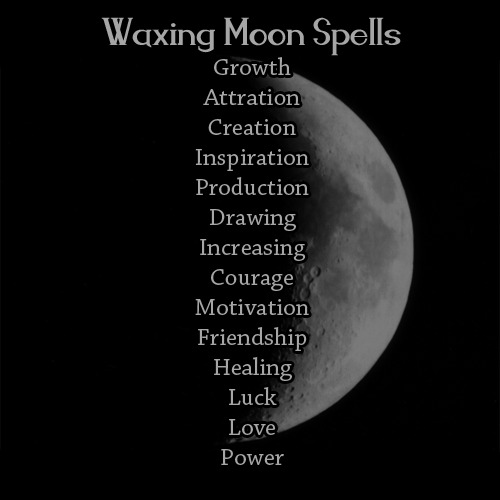


What Types of Spell Work To Do By: Moon Phase
8K notes
·
View notes
Text
The "I'm Tired, I'm Dying" Spell
This is a spell to do when you’re tired and you feel shit out of luck and you have more than a million things to accomplish.
Things you need:
Black Tea
Cinnamon (stick cinnamon is best)
Lemon and/or Ginger
Brew your tea and add your ginger and/or lemon. The ginger is greatly used for success and power, and mundanely can be used to ease aches such as an icky stomach or headache. Lemon enhances physical energy and is great when you’re experiencing mental fatigue (just a couple drops will do). Mix well with a cinnamon stick. If you don’t have a cinnamon stick handy just add a bit of powdered cinnamon and swirl clockwise while saying:
“I’m tired, I’m dying,
but I’m still trying.
Lift my head,
I’m not dead.”
Say this while mixing until you feel that it is done. Drink the tea and take some time to chill before you go crazy.
13K notes
·
View notes
Note
apologies if this has been asked before, i'm on mobile, but what are some good spells to practice with for super beginner witches? i've never done one and don't want to massively mess something up lol. thank ya
no worries. this has been asked before, but I’ve always forgotten to tag such posts and they’ve been lost in my archive. I’m deeming these spells beginner friendly because they don’t require exotic or difficult to obtain materials (for most people) and they’re not really complicated.
Luck Spell
Vanilla Anti-Anxiety Spell
Calming Spell Jar
Joyful Candle Spell
Poppet Money Spell
Protection Sachet
Easy Protection Charm
Easy Luck Powder with Household Herbs
Prosperity Knot/Cord Spell
Kitchen Cabinet Abundance Jar
Peppermint Healing Spell
Four All-Purpose Spells
Simple Braiding Spell
Simple Calming Room Spell
Inner Peace Spell
Free Me Spell
Sleep Charm
Sleep Well Spell
Spell for Inspiration
Burn Away Negativity Spell
Secular Smoke Cleansing Ritual
also useful:
What to do When You Don’t Have the Materials for a Spell
Some Tips for Beginner Witches
Tips on Charm/Item Placement for Spellwork
Five Reasons Your Rituals Don’t/May Not Work
2K notes
·
View notes
Text
Second Sight Talisman
p u r p o s e - to enhance your ESP (extrasensory perception), to aid in seeing beyond the physical world, and to help communication and visualization in the astral plane.
a small object of your choice
(This will act as your talisman. You can honestly use any object, but i my opinion, it’s best to use something small that can fit into the palm of your hand, like a stone, a crystal, a piece of jewelry, a bead, a small bone; you get the idea.)
mugwort
cinnamon
sage
Boil some water and pour it over the mugwort, cinnamon, and sage in a mug or jar to make tea. Don’t drink this tea, mugwort can make you sick.
Steep the tea for about 10 minutes, and don’t drain the herbs out.
Now, take your object and either dunk it in the water or pour the water on top of it. It’s alright if the herbs get on your object.
This is the most important part. Without washing it off, take your object and put it in one hand, covering it with the other hand. Focus on what you want the talisman to do for you. Visualize the energy that courses through your body coming out of the palms of your hands and filling up the object.
While doing that, say (out loud or in your head, whatever makes you more comfortable):
”Help me to leave this plane behind,
to see what was once hidden.
Help me to empower my mind,
to encounter what once was forbidden.”
Keep imagining your energy pushing into this object and giving it life, while focusing on your intention as much as possible. You can repeat the above words if you want. Do this until you feel like the object is completely filled up.
Wash your object off in the sink and let it dry.
Now you have your talisman and it’s ready for use! You can carry it with you if you want to be able to pick up on things in the physical world, or, you can hold it while you’re meditating, divining, or astral traveling.
e x t r a t i p s
Talismans often develop their own particular energies over time, it can be helpful and fun to give them a name.
I don’t find that recharging is necessary for this talisman, but if you feel like it is losing power, you could hold it in your hands again and push your energy into it again.
It’s normal to feel weaker after you have charged an object with your energy; make sure to rest and eat/drink after you’re done!
2K notes
·
View notes
Photo
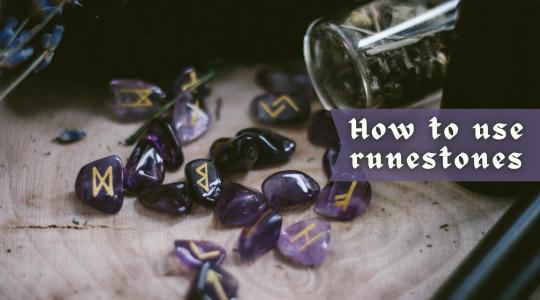
A Complete Guide to Runestones
Casting and reading the runes is a popular form of divination in modern new-age practice. It is based on an old Germanic and Norse practice linked with the practice of Heathenry and the worship of Odin and other northern European pagan gods.
Like many other forms of divination, the practice is designed to help you access your intuition or your spiritual senses to bring to the surface truths that you already know in your heart. Your subconscious mind is much more powerful than your conscious mind and has information you simply cannot take in consciously. Practices such as rune casting let you quiet the conscious mind so that your subconscious mind has space to speak and reveal.
You can read more about the underlying philosophy of divination in our post about using the Tarot.
In this article, we will take you through several methods for casting rune stones for divination and how to interpret the runes. At the end of the article, we will also take a closer look at the history of the runes from ancient times to modern practice.
How to Read the Runes
Since rune casting is all about tapping your intuition and divine spark, there is no single right way to use them. Many experienced rune readers have developed their own approaches and shared them, so look around for ideas and inspiration.
But any approach will involve holding a question in your mind and then casting, placing, or selecting stones that will guide you toward a response.
Before you start, there are a few steps that you should take.
Find a set of runestones that speaks to you spiritually – you can shop our runestone collection here.
Connect with your rune stones by spending time with them. This should be physical, holding them in your hands and examining them, and intellectual, reading your guidebook and taking in the meanings associated with the different runes.
Prepare yourself through meditation that helps you to quiet your active mind and let your subconscious mind flow to the surface.
Learn how to ask questions, which should be open-ended, since all things are possible, rather than yes or no questions.
Read our more detailed guide to preparing for a divination session here.
Before every individual casting, you should also cleanse your rune stones of energy other than your own. You can protect your rune stones by storing them with energy-cleansing crystals such as black obsidian, citrine, or amethyst. You can also cleanse your cards by leaving them under the light of the moon for a night or smudging them with incense. You should then hold the runestones in your hands for several minutes before a reading to make a connection between yourself and the runes.
Casting Patterns and Methods
There are many different ways to then use the runes to find answers, but we will go through some of the simplest and our favorites below.
The Three Norns
Hold your runestones while considering your question, and then retrieve the rune stones that seem right either from your hands or from a sack. Place three runestones in a row in a horizontal line. The first runestone will reveal the major causes of your current challenges. The middle stone will represent the reality of your current situation, which we are often blind to. The final runestone will indicate the best course of action going forward.
The Four Dwarves
This casting works in the same way, except that you will place four runestones in a circle, working clockwise from the top. The top rune indicates the main causal factors of your situation. The runestone on the right suggests that you are doing that is influencing the current situation, while the left indicates what others might be doing or feeling. The bottom runestone indicates the reality of what is happening that is currently hidden from you.
Vé Branches
This is a more complex casting that uses seven runestones laid out in a V shape. Start with the bottom rune and work upwards, placing runes on the right and then the left. The rune at the bottom represents the truth of your current situation, and each line represents one of the most likely outcomes. The first rune represents your most likely action, the second your motivation for that action, and the third what the result is likely to be.
Rune Board
Other casters use a rune board. This can be designed in various ways but will have different areas that relate to different elements. It could be past-present-future, cause-affect-outcome, or different aspects of your personality. In this case, when you are ready to ask your question, you throw the runes over the board and make your reading based on where they land.
Individual Rune Meanings
There are many different rune designs, and each will come with its own guide with different meanings and interpretations. Also, as you become accustomed to the runes and grow close to them, you will start to develop your own meanings and associations.
Nevertheless, below are the most commonly accepted meaning for the Armanen runes, the runes most commonly used in rune casting.
Fa – Primal Fire – power of spirit, change, and creativity
Ur – Resurrection – physician’s rune for resurrection, eternity, and continuity
Dorn – Lightning and Thunder – targeting goals, activity, masculinity
Os – Mouth – spiritual power, voice, gaining power and respect
Rit – Ritual – orderliness, primal law, cynical events, rescue from an enemy
Ka – World Tree – power, generation, ability, and artfulness
Hagal – Hail – mother rune represents enclosure and contains potential for growth
Not – Necessity of Fate – karma, future existence
Is – Ego – self-control, personal power, obedience, compelling will
Ar – Leadership – beauty, fame, intelligence, virtue
Sig – Sun Power – success and victory
Tyr – Rebirth of the Sun God – turn a situation around, wisdom, spiritual understanding
Bar – Birth – creative power, becoming, song
Laf – A-rlog – defeat, laws or nature, water
Man – Manking – birth, health, increase, maleness
Yr – Bow – femaleness, nigh, death, instinct, anger, falsehood
Eh – Duality – love, trust, and marriage
Gibor – Gift of Life – cosmic consciousness and divine principle
Where do the Runes come from?
Various northern European peoples used runes as a system of writing. Probably the most widespread runic language was Futhark, used by the Norse people. They used a 24-character alphabet known as Elder Futhark between the 2nd and 8th centuries, which developed into a smaller 16-character alphabet known as Younger Futhark from the 8th century. At around the same time, the Anglo-Saxons and Frisians developed a related Runic alphabet known as Anglo-Saxon Futhorc.
Across all these groups, the runes became less popular with the rise of Christianity, and they were replaced by the Latin alphabet.
The Norse people believed that their runes were more than just a system of writing but rather a tool used to shape reality. The Norns, the fates in Norse mythology, write destiny into the bark of Yggdrasil using the runes. Odin, the most important Norse deity, saw the Norns at their work and was jealous of their knowledge. He hung himself from the World Tree, Yggdrasil, for nine days and nine nights while pierced by his own sword to learn the secrets of the runes, which he then shared with mankind.
In the Norse sagas, many heroes are described as runemasters who can use the runes to heal the sick and destroy their enemies. There are also many surviving archaeological examples of objects inscribed with runes seemingly meant to provide protection or ensure the quality of something stored. But, since the pagan Norsemen left no written records and our knowledge principally comes form later Christain texts, we do not know very much about how the Vikings used the runes.
We do know that centuries later, the Norse people of Iceland combined the runes to create runic staves believed to have magical properties. These are recorded in several magical grimoires surviving from the 17th, 18th, and 19th centuries. Some of the most famous runic staves in these magical texts include Aegishjalmur, also known as the Helm of Awe, a symbol of protection, and Vegvisir, also known as the Norse Compass, a powerful wayfinding symbol.
Ancient to Modern Runic Divination
We know that the Norsemen also engaged in divination. Volva were witch women highly respected in society that were often called upon to act as seeresses. That their practices may have included rune casting is indicated by a much older text.
The first-century Roman author Tacitus observed similar witches among the Germanic tribes of his day. He said that the runes were carved into small objects, such as sticks and bones, which would then be cast onto the ground. The seeress would make a reading based on how the runes fell.
But while runic divination seems to have existed in some form for at least 2,000 years, the modern practice dates to the 17th century. Johannes Bureus, a Swedish mystic, was inspired by the practices of his ancestors and made the modern system based on combining the Younger Futhark runes with the Kaballah, a Jewish mystical tradition.
His work was further developed in the 1900s by the Austral occultist Guido von List. This is the most common system used today and is known as the Armanen runes.
[Read The Full Blog Post Here]
971 notes
·
View notes
Text
Breathwork
WHAT IS BREATHWORK?
Breathwork is the active form of consciously working your breath to bypass the mind and enter a different state of awareness. This is what most people seek when meditating, and breathwork takes you to that place very quickly. The practice gives the brain’s executive functioning something to focus on, so you can bypass the mental level of consciousness and drop into a deeper state of consciousness, where healing, spirit, and love reside.
HOW DO YOU DO BREATHWORK?
There are many types of breathwork techniques, and each form of breath has a unique purpose and creates a different effect. As you breathe, you will become aware of thoughts, feelings, memories, and patterns that are not aligned with love and self-love. Even though many of us have processed childhood, beliefs, patterns in psychiatry, therapy, coaching, or healing, breathwork offers an opportunity to release any energy that has been unconsciously residing in the body or energetic system. Once those energies are released, there is more space for your inherent life force to flow through you.
There are little-to-no rules when it comes to establishing your own breathwork routine: You can practice in person with a teacher (in a group or solo setting), tune into a digital session, or guide yourself through a breath sequence from home or even in the middle of your work/school day.
BREATHWORK VS YOGA AND MEDITATION
Breathing practices are on the rise, and there’s a reason why: Unlike meditation, where we are aware of our mental chatter, breathwork allows us to disconnect from the mind and reconnect with our body and energy. From this elevated state of awareness, we are able to heal, grow, and expand.
While meditation is an extremely useful form of self-reflection because it allows us to see the pace, substance, and truth of our thoughts, it also keeps us stuck in our mind, while many people are seeking to get out of their own heads. Meditation is a slow and steady practice that over a period of time will shift our perspective. But many people are seeking relief now, and meditation does not bring the relief they are looking for. Breathwork, on the other hand, can be easier to drop into when you are seeking more immediate feedback. It’s a great tool to pull out when you’re feeling stressed, overwhelmed, or off-center.
WHO CAN BENEFIT FROM BREATHWORK?
There is a misconception that healing arts are for individuals who are struggling or suffering. And yes, breathwork is very supportive for stress, tension, overwhelm, anxiety, depression, fear, trauma, insomnia, etc. But breathwork is also nourishing for someone who is doing well and feels ready for the next opening—the next layer of love, peace, gratitude, clarity, connection, and insights.
SOME THINGS TO LOOK OUT FOR
Some of the side effects that someone might experience during breathwork include tingling, buzzing, warming, cooling, or tightness in certain parts of their body. They may see colors or images or have downloads and insights. No matter what, whatever is happening is supposed to be happening. Your body has an innate intelligence and wisdom and it will support you in releasing what no longer serves you.
TIPS AND TRICKS
Breathwork, on the other hand, is an active form of meditation that allows us to disconnect from the mind and be guided by our body and heart. As we breathe out thoughts, beliefs, memories, actions that do not support our growth, we return to our wholeness and feel more equipped to handle stress, anxiety, and lingering trauma. There are many different breathwork techniques, and each one has a unique purpose and effect on the body. Here are three beginner techniques that deserve a spot in your repertoire and some recommendations for how and when to use them.
Keep reading
486 notes
·
View notes




